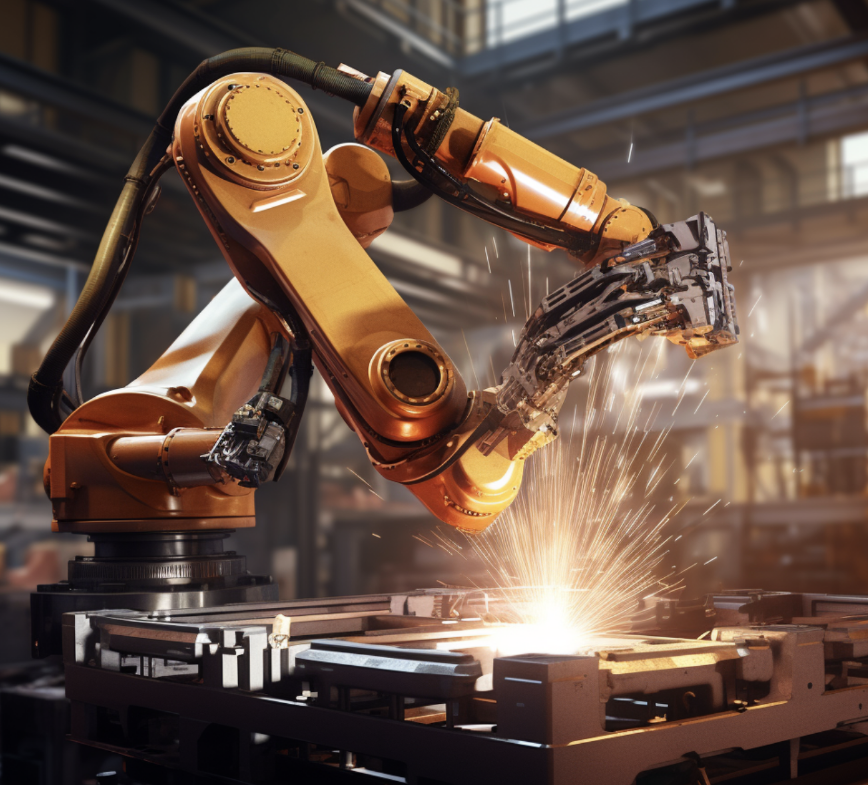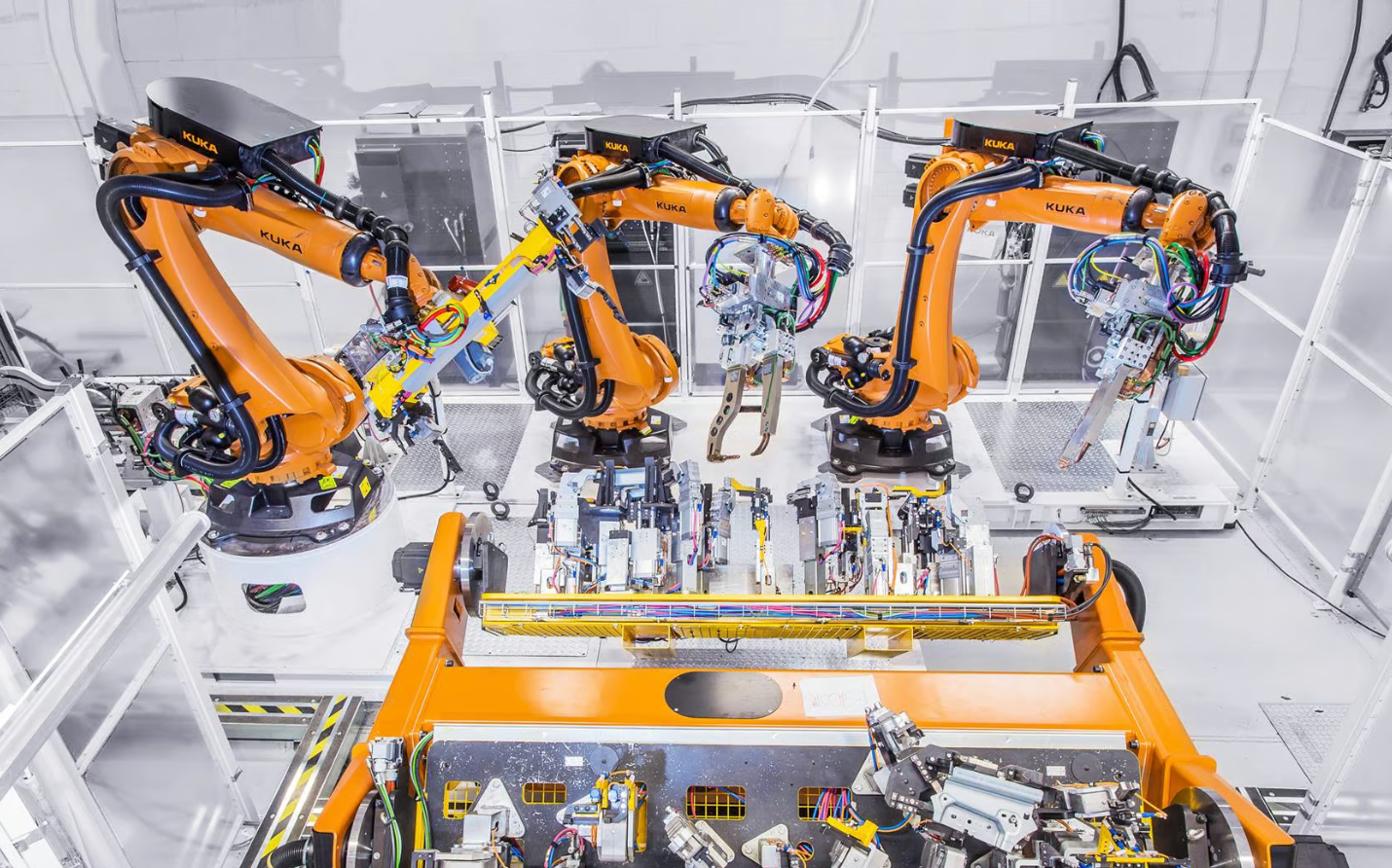The most common problem is inaccurate joint tracking, leading to compromised weld quality.
Historical Perspective
Evolution of Robotic Welding
Robotic welding has its origins in the 1960s, when the first rudimentary welding robots were introduced in the automobile manufacturing industry. These early models were simple, pre-programmed machines that followed a fixed path and had limited functionality.
By the 1980s, the use of computers introduced a new dimension to robotic welding, allowing for greater precision and flexibility. Around this time, the first arc welding robots came into the picture, which drastically improved the efficiency of the welding process. These robots utilized high-speed processing to ensure accurate welding at much faster rates than manual welding.
The 1990s saw the integration of advanced sensors and cameras, giving robots the capability to make real-time adjustments based on the feedback they received. This period also witnessed the rise of laser welding robots, offering an even higher degree of precision, especially for thin materials.
In the 2000s, with the advent of artificial intelligence and machine learning, robotic welding machines became smarter. They were not just following pre-set instructions; they could now learn and adapt to different scenarios, materials, and requirements. The weld quality improved substantially, and the robots could handle a wider variety of tasks.

Milestones in Robotic Welding Technology
- 1960s: Introduction of the first robotic welding machines in the automobile industry. These had a power output of around 60 kW and were primarily used for simple tasks due to their limited capabilities.
- 1980s: Introduction of the first arc welding robots with an improved power range of up to 150 kW. These robots marked a significant reduction in welding costs by nearly 40%, increasing production speeds by almost 30%.
- 1990s: Laser welding robots hit the market. They were known for their precise welds, especially in metals like aluminum and titanium. The efficiency rates surged by 50% compared to traditional methods.
- 2000s: Integration of AI in robotic welding. These smart machines boasted of a lifespan of 15-20 years, provided they were maintained properly. They also showcased a 70% increase in speed and a 60% decrease in material wastage, optimizing costs and reducing budget constraints for many industries.
- 2010s: The introduction of collaborative robots or “cobots.” These robots were designed to work alongside humans, ensuring safety and increasing productivity. Their average cost was around $35,000, but the value they brought in terms of quality and efficiency made them a worthwhile investment for many companies.
Common Problems in Robotic Welding
Inaccurate Joint Tracking
One of the primary challenges in robotic welding is ensuring that the robot accurately tracks the joint it is meant to weld. Even a deviation of a few millimeters can lead to a flawed weld. Factors like vibrations, misalignments, or even slight variations in the materials can throw off the robot’s accuracy. For instance, if a metal sheet that’s supposed to be 2mm thick varies and is 2.5mm in some places, the robot might not adjust adequately, leading to an inaccurate weld. The introduction of real-time monitoring systems has made improvements in this area, but ensuring 100% accuracy remains a challenge.
Lack of Adaptability to Variations in Parts
Unlike humans, robots find it hard to adapt to slight variations in the parts they are welding. A robot programmed to weld a specific size or shape might struggle if there’s a deviation.
Weld Spatter
Weld spatter is a common problem where tiny molten metal droplets are expelled during welding, which then solidify and stick to the surrounding areas. This not only affects the visual appeal of the weld but also its structural integrity. Weld spatter can be a result of using incorrect parameters like too high a voltage or improper shielding gas mix. On average, addressing weld spatter can increase production costs by up to 10% because of the need for post-weld cleanup and potential rework.
Inadequate Gas Shielding
Shielding gas plays a crucial role in ensuring the quality of a weld. If the shielding gas flow is too low or is disrupted, it can lead to weld defects like porosity or oxidation. For instance, a welding robot working at an efficiency rate of 80% can see this drop to 60% or lower if there’s inadequate gas shielding, affecting the overall quality and strength of the weld.
Equipment Wear and Tear
Robotic welding equipment is designed for heavy-duty work, often operating for hours on end. Over time, this leads to wear and tear of the components. A welding torch, for instance, can have a lifespan of around 5,000 hours. After this, its performance can degrade, leading to issues like inconsistent arc lengths or unstable arcs. Regular maintenance can offset some of these challenges, but replacing parts comes with associated costs. For a medium-sized manufacturing unit, the annual budget allocation for maintenance and replacement of robotic welding parts can be in the ballpark of $50,000 to $100,000, depending on the intensity of usage.
Causes of Common Problems
Limitations in Robot Sensing Capabilities
One of the significant challenges with robotic welding is the limitation in the robot’s sensing capabilities. While robots can be highly precise, their sensors might sometimes struggle to detect minute variations. For example, a standard robot sensor designed to detect a change of 0.5mm in a workpiece might miss out on detecting variations of 0.2mm or less. This limitation can lead to inaccurate welds. Upgrading to high-precision sensors can cost manufacturers anywhere from $10,000 to $50,000, depending on the complexity and brand. Furthermore, even with advanced sensors, there’s no guarantee of 100% accuracy. For instance, the LIDAR technology often used in robot sensing can have an accuracy rate of up to 95%, which means there’s still a 5% margin of error.
Inconsistencies in Workpieces
The efficiency of a robotic welder is highly dependent on the consistency of the workpieces. When there are variations in material thickness, size, or coating, it can throw off the robot’s pre-programmed parameters. For instance, if a robot is set to weld steel sheets of 3mm thickness, and it encounters a sheet that’s 3.5mm, the result can be an incomplete fusion or excessive penetration. In a production batch of 1,000 pieces, even a 2% inconsistency rate means 20 pieces can be of subpar quality, potentially leading to increased costs in rework or material wastage.
Environmental Factors Affecting the Weld
The surrounding environment plays a pivotal role in the welding process. Factors like humidity, temperature, and even air flow can influence the quality of the weld. For instance, welding in an environment with a high humidity level of 70% and above can introduce moisture into the weld, leading to porosity. Similarly, if the ambient temperature is too high or too low, it can affect the material’s characteristics, altering the welding parameters needed.
Moreover, even something as simple as a draft in the welding area can disrupt the shielding gas flow. If the gas flow drops below the optimal level, which is typically around 20 cubic feet per hour for MIG welding, it can introduce contaminants into the weld. Ensuring a stable environment might require investments in climate control or proper ventilation systems, adding to the operational costs.
Impact of these Problems
Reduction in Weld Quality
A direct consequence of the aforementioned problems is a significant reduction in weld quality. An inconsistent workpiece or an environmental factor like humidity can lead to weld defects such as cracks, porosity, and incomplete fusion. A single defective weld in a crucial component, say an automobile chassis, can compromise the structural integrity of the entire unit. If a company produces 10,000 units monthly and has a defect rate of even 1%, this translates to 100 potentially compromised products. The cost of recalls, replacements, and reputation damage can run into millions.

Increased Production Costs
Every flaw, every rework, and every scrap piece directly contributes to increased production costs. For example, if the average cost of producing a component is $100, and due to inconsistencies, there’s a need for rework on 5% of them, this can translate to an additional cost of $5 per component. For a batch of 1,000 components, that’s an extra $5,000 in production costs. Furthermore, using high-precision sensors and investing in advanced welding technologies can increase initial capital expenditure by 20% to 40%.
Reduced Efficiency and Productivity
Inconsistencies and defects slow down the production line. If a robotic welder has a cycle time of 1 minute per weld and encounters problems that require it to stop or slow down, even a 10-second delay per cycle can add up significantly over time. For a production line operating 10 hours a day, this 10-second delay can result in a loss of 60 welds daily, leading to substantial losses in productivity and efficiency over the long term.
Safety Concerns
Poor weld quality isn’t just an issue of aesthetics or costs; it’s a significant safety concern. Faulty welds can result in catastrophic failures, especially in industries like automotive, aerospace, and construction. For instance, in vehicles, a failed weld can lead to accidents, endangering lives. In the worst-case scenario, companies can face lawsuits running into millions or even billions, not to mention the irreversible damage to brand value and trust.
Solutions and Best Practices
Advanced Sensors and Cameras for Real-time Feedback
Implementing high-resolution cameras and cutting-edge sensors can significantly enhance the accuracy and reliability of robotic welders. For example, using cameras with a resolution of 8K can help detect even the slightest variations or misalignments in the workpiece. The integration of LIDAR technology and infrared sensors can further refine the robot’s sensing capabilities. Although the initial investment for these technologies might range between $20,000 to $60,000, the resultant reduction in defects and increased product quality can lead to long-term savings and higher customer satisfaction.
Regular Maintenance and Calibration
Ensuring that robotic welding equipment undergoes regular maintenance and calibration is essential for optimal performance. Calibrating the robots every 1,000 hours of operation, for instance, can prevent deviations and inconsistencies in weld quality. Additionally, preventive maintenance can prolong the equipment’s lifespan, which typically ranges from 8 to 10 years. While annual maintenance might cost around $5,000 to $10,000, it can prevent potential losses amounting to hundreds of thousands due to equipment breakdowns or production halts.
Use of Advanced Welding Techniques
Embracing newer welding methods, like Friction Stir Welding (FSW) or Laser Beam Welding, can mitigate many common welding challenges. FSW, for instance, generates less heat and can reduce problems like warping or distortion in the workpiece. A machine capable of FSW might cost upwards of $150,000 but can offer faster welding speeds and better-quality welds, justifying the investment over time.
Training and Skill Development for Operators
While robots perform the welding tasks, human operators still play a crucial role in overseeing the process, setting parameters, and addressing anomalies. Investing in training programs to equip operators with the latest welding techniques, understanding of robot behavior, and troubleshooting skills is invaluable. A comprehensive training program might cost around $2,000 to $5,000 per operator, but the return on investment in terms of reduced defects, faster problem resolution, and improved weld quality can be multifold.


